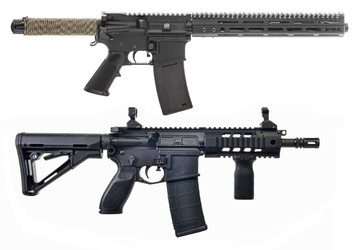AR-15 Pistol vs. SBR: What's The Difference?
Posted by 80-Lower.com on Jan 30th 2024
In the past years, AR-15 pistols have become increasingly popular. The reason why is simple: Buying or building a short-barreled rifle (SBR), is far costlier and requires extensive paperwork. But what, exactly, is an SBR? What's an AR pistol, and why choose one or the other? Let's compare.
What is a Short-Barreled Rifle?
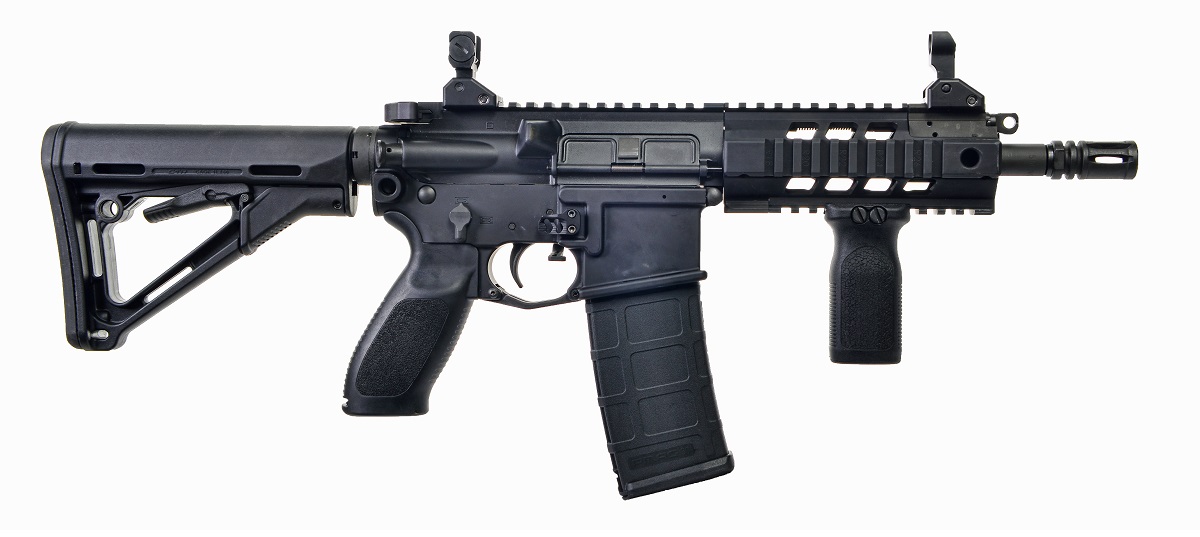 Under federal law, a short-barreled rifle (SBR) is any firearm equipped with a stock (or that is intended to be fired from the shoulder) and a rifled barrel measuring less than 16" in length.
Under federal law, a short-barreled rifle (SBR) is any firearm equipped with a stock (or that is intended to be fired from the shoulder) and a rifled barrel measuring less than 16" in length.
An SBR can also be any rifle with a barrel 16" or longer, but an overall length of less than 26". This usually concerns bullpup rifles.
How to Measure an SBR
To determine whether a rifle is considered an SBR, measure from its stock to the end of its muzzle to calculate overall length. If the barrel has a muzzle device that isn't permanently installed (pinned and welded), remove the device before measuring. If the rifle's stock is telescoping or adjustable, measure overall length with the stock at its full extension.
Exemption to the 16" Barrel Rule
Normally, if a rifle has a barrel less than 16" in length, no measurement is necessary. It's simply considered a short-barreled rifle.
But it is possible to avoid classifying a rifle as an SBR, even if it has a barrel shorter than 16". This is done by permanently pinning and welding a muzzle device onto the rifle's barrel to bring its length to 16" or more.
This is a common practice for AR-15 enthusiasts who want to build or buy an M4 clone. Military-issued rifles have 14.5" barrels and are considered SBRs. By permanently installing an A2-style flash hider measuring at least 1.5" in length, it is possible to build a semiautomatic M4 clone with the correct barrel length, without registering it as an SBR.
What is an AR-15 Pistol?
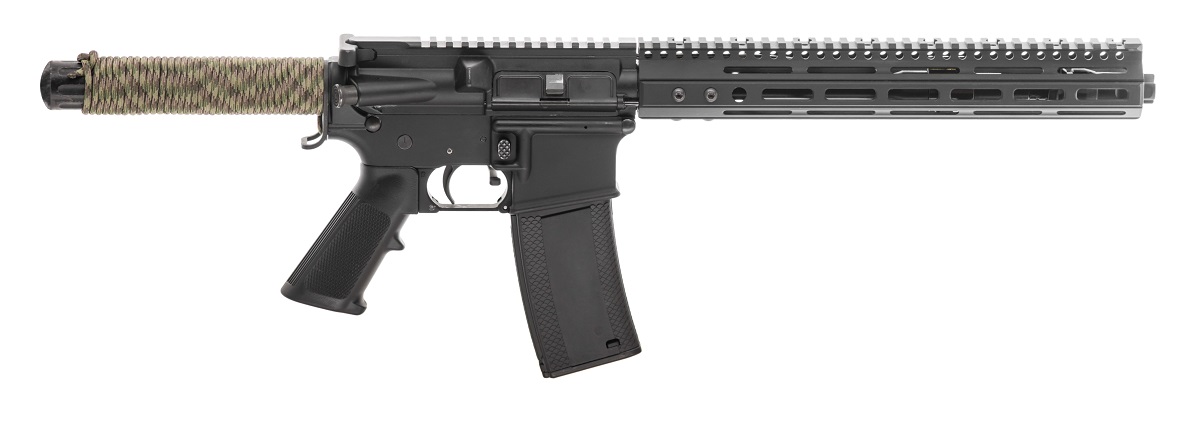 An AR-15 pistol has a barrel shorter than 16", but no stock attached to its buffer tube. Because it lacks a stock, the AR-15 is not intended to be fired from the shoulder and is considered a pistol. This distinction exempts the firearm from being classified as a short-barreled rifle.
An AR-15 pistol has a barrel shorter than 16", but no stock attached to its buffer tube. Because it lacks a stock, the AR-15 is not intended to be fired from the shoulder and is considered a pistol. This distinction exempts the firearm from being classified as a short-barreled rifle.
Pistol Braces vs. Stocks
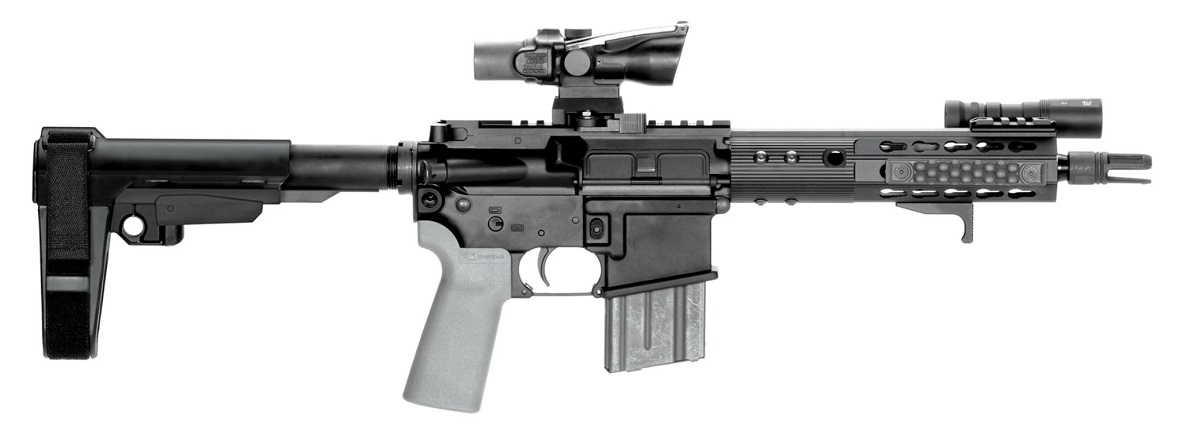
At a glance, this AR-15 looks like a short-barreled rifle. But the device attached to the buffer tube isn't a stock. It's a pistol brace -- an adjustable SBA3 Brace from SB Tactical.
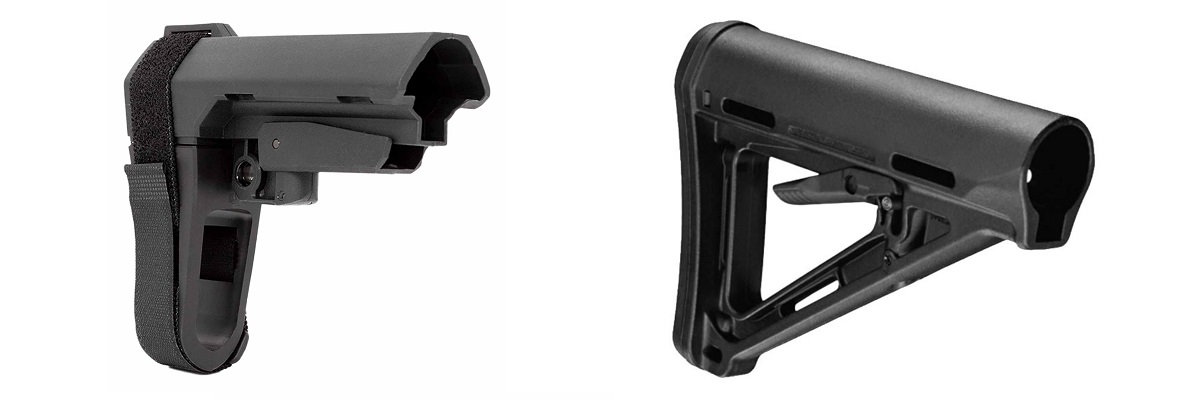
Although it may look like a shoulder stock -- like the Magpul MOE Stock, pictured to the right -- the pistol brace is designed to be strapped to the forearm to provide stability and recoil control when aiming and firing the AR pistol with one hand.
But, like a buttstock, the brace attaches to the AR's buffer tube and it's adjustable, with a telescoping function to change the length of the brace relative to the receiver and trigger.
"Can I use a pistol brace?"
The Bureau of Alcohol, Tobacco, Firearms and Explosives has endlessly flip-flopped on the topic of installing and shouldering pistol braces. The agency has also attempted to redefine federal gun laws with the intent of reclassifying most (if not all) AR pistols equipped with braces as SBRs.
In early 2023, the ATF released poorly worded, vague, and confusing rules that sought to clarify whether the agency would classify an AR-15 pistol equipped with a pistol brace as a short-barreled rifle.
Before installing a brace on your AR-15 pistol, you should carefully read and interpret these rules to determine whether your pistol would be classified as an SBR. Given the rules' vague and confusing language, we strongly recommend consulting with an attorney on this matter.
AR Pistols and Vertical Foregrips
When buying or building an AR pistol, it's also important to avoid installing a vertical foregrip, or VFG. Because federal law defines a pistol as a firearm intended to be fired with one hand, installing a VFG on your AR pistol could cause it to be classified as an "Any Other weapon", or AOW. Like a short-barreled rifle, an AOW is a restricted firearm that must be registered with the ATF per the National Firearms Act.
Which is Better? An SBR or Pistol?
The short-barreled rifle is the better firearm.
A short-barreled rifle is more comfortable to shoot, and it tends to provide better accuracy by providing the shooter extra stability with a proper shoulder stock. You can also install a vertical foregrip on your SBR for better recoil control.
AR pistols still perform well (and they're more affordable and convenient).
In spite of lacking a stock, AR pistols can be configured with all the other same accessories and components of an SBR, allowing them to provide similar performance at a lower cost. You're also not bound like the various restrictions and inconveniences of owning an NFA firearm.
How to Legally Own an SBR
Speaking of restrictions: Legally owning an SBR is a time consuming and costly endeavor. There are extra steps one must take to register an SBR, including steps that aren't necessary when buying or building an AR pistol. Those extra steps include:
Submitting an NFA Application
Like suppressors, short-barreled rifles are firearms classified under the National Firearms Act, or NFA. To own an NFA firearm, you need to submit to an enhanced background check with the ATF and FBI.
This enhanced background check involves filling out extra pages of paperwork, and submitting fingerprints. If you're buying an SBR from a gun dealer, you'll need to submit ATF Form 4, an "Application for Tax Paid Transfer and Registration of a Firearm."
If you're converting an AR pistol or building an SBR, you'll need to submit a Form 1 application, an "Application to Make and Register a Firearm."
Follow our detailed guide on how to legally convert an AR pistol into SBR.
Paying For a Tax Stamp
When submitting your Form 4 or Form 1 application, you must also pay a $200 fee to get your application approved. This fee pays for a tax stamp, a mark signifying the registration and ownership of your SBR.
Playing the Waiting Game
It typically takes many months for your NFA application to be approved. Once you submit the application, you'll have to wait for approval and receipt of your tax stamp before you can buy or build your SBR.
Engraving The Rifle
If you're building an SBR, you'll need to engrave the rifle with your name, where you live, the rifle's caliber and, if the receiver doesn't already have one, a unique serial number identifying the firearm. Most builders pay a gunsmith to complete these engravings.
(You Can Always Start With a Pistol)
Many AR builders start off by putting together a regular pistol with a build kit and a stripped lower receiver (or fabricated 80% lower). Then, they may later submit a Form 1 application to register the pistol as an SBR before installing a stock.
Check out these AR pistol kits to get started.
DISCLAIMER: If you are new to the world of DIY gun building, you likely have a lot of questions and rightfully so. It’s an area that has a lot of questions that, without the correct answers, could have some serious implications. At GunBuilders.com, we are by no means providing this content on our website to serve as legal advice or legal counsel. We encourage each and every builder to perform their own research around their respective State laws as well as educating themselves on the Federal laws. When performing your own research, please be sure that you are getting your information from a reliable source.

